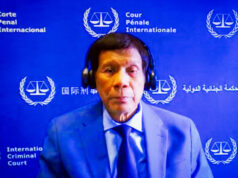
THE PHILIPPINES is expediting efforts to close a preferential trade deal with India, President Ferdinand R. Marcos, Jr., said on Tuesday, as Manila seeks to diversify its economic partners and expand trade relationships with the world’s fourth-largest economy.
Speaking during a five-day state visit to New Delhi, Mr. Marcos said he and Indian Prime Minister Narendra Modi had directed their economic teams to push forward with trade talks and explore new investment opportunities.
“Prime Minister Modi and I have charged our economic teams to shepherd our commerce, now at $3.3 billion in the last year, towards a continued upward trajectory and expanded baskets of goods,” Mr. Marcos said following their meeting, according to a live-streamed video in the Radio Television Malacañang (RTVM) YouTube channel.
“To this end, we have decided to expedite the work that we are doing to forge a bilateral preferential trade agreement.”
The push comes as the Philippines looks to reduce its reliance on traditional markets such as China and the US amid rising global trade uncertainty.
A trade pact with India would open access to a market of more than 1.4 billion people and align with Mr. Marcos’ broader pivot to Indo-Pacific economies to fuel post-pandemic recovery and long-term growth.
India remains one of the Philippines’ most significant trading partners, with bilateral trade reaching $3.53 billion in fiscal year 2023–2024, up from $3.05 billion the year before, based on data from the Indian Embassy in Manila.
India exports engineering goods, auto parts, electronics, petroleum, steel, medicines, chemicals, rice, and meat to the Philippines. In turn, the Philippines exports electrical machinery, semiconductors, copper, lead, plastics, precious stones and animal feed.
The Philippines also imports about 20% of India’s pharmaceutical exports to Southeast Asia, making it a key partner in the region’s healthcare supply chain.
“We looked at leveraging mutual opportunities to boost two-way investment,” Mr. Marcos added.
“Our fast-growing, innovative private enterprises will play an important role in our common march towards progress and development, facilitating innovation, technology transfer, and upskilling and generating employment for our people.”
A total of 13 bilateral agreements were signed between Manila and New Delhi, spanning pacts across defense, trade, technology, and tourism.
To further boost trade and tourism, Mr. Marcos announced the resumption of direct flights starting in October and the implementation of reciprocal visa liberalization.
India will offer visa-free travel to Filipinos, a privilege the Philippines extended to Indian nationals in June.
Meanwhile, Mr. Marcos said India is now a strategic partner of the Philippines, the fifth country to have been granted with such status, he noted.
“Today, India becomes only the fifth strategic partner for the Philippines. This new apex attests as much to the remarkably rapid growth, broadening, and deepening of our 75-year-old bilateral relationship [and] the possibilities represented by the strong upward trajectory of our two economies as it does to the growing alignment of our interests and views on the challenges and imperatives of our time,” he added.
As part of the new strategic partnership, India and the Philippines also agreed to deepen military and maritime cooperation. India’s BrahMos missile system is already part of the Philippines’ defense modernization.
The partnership comes as both countries assert a stronger presence in the Indo-Pacific. Mr. Marcos reaffirmed Manila’s commitment to a free and open maritime order and thanked India for supporting the 2016 arbitral ruling that invalidated China’s expansive claims in the South China Sea. — Chloe Mari A. Hufana



